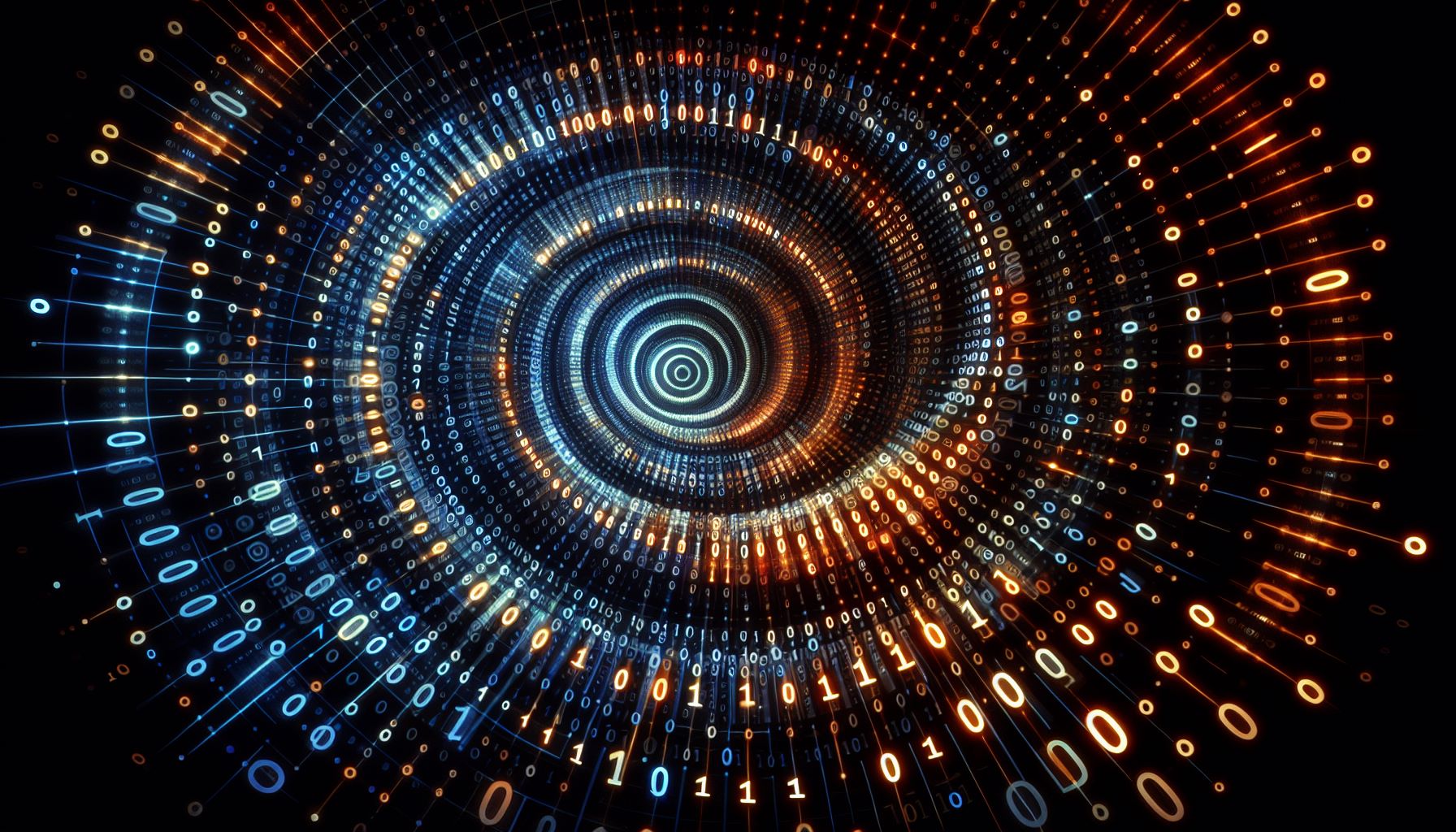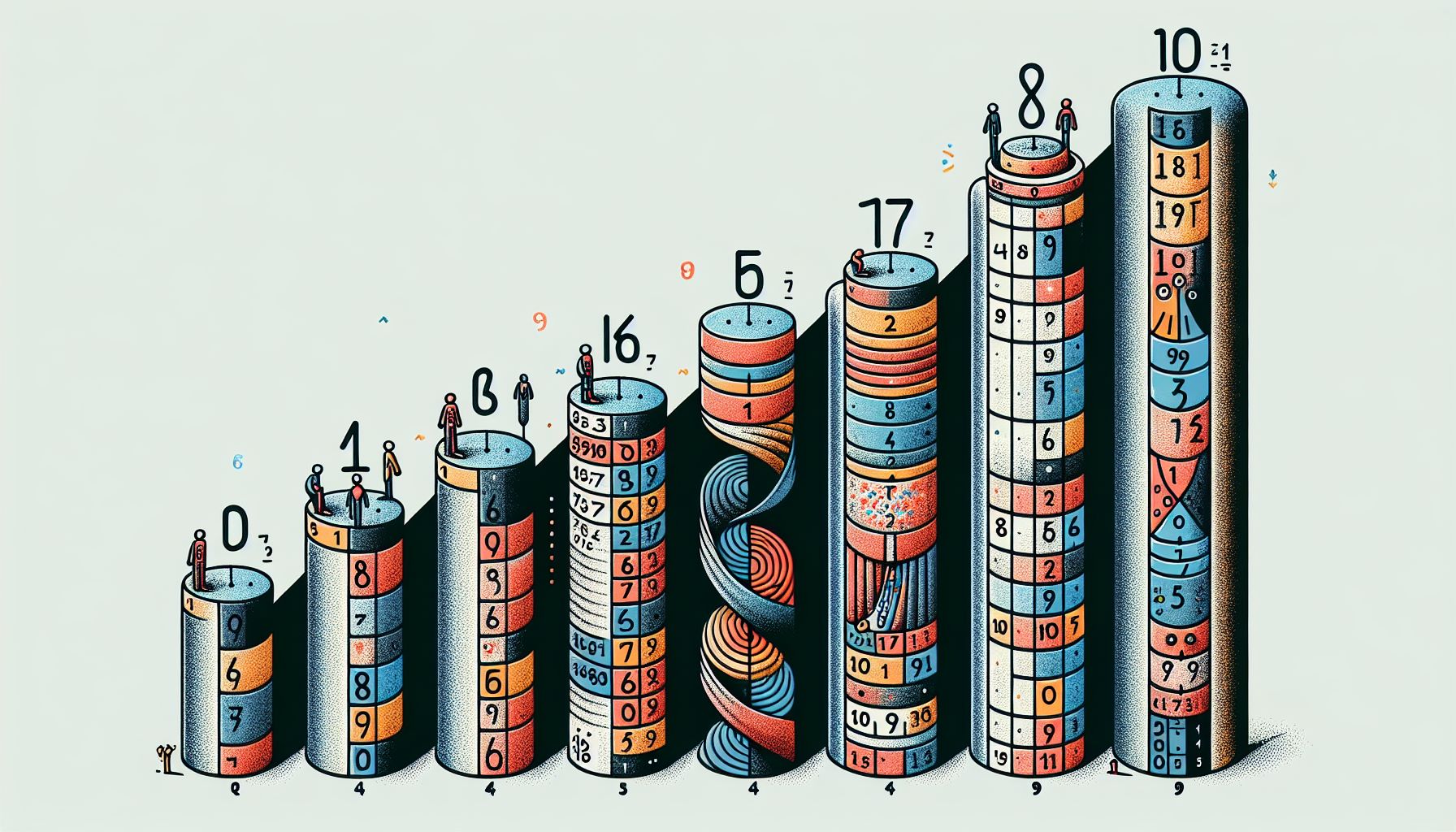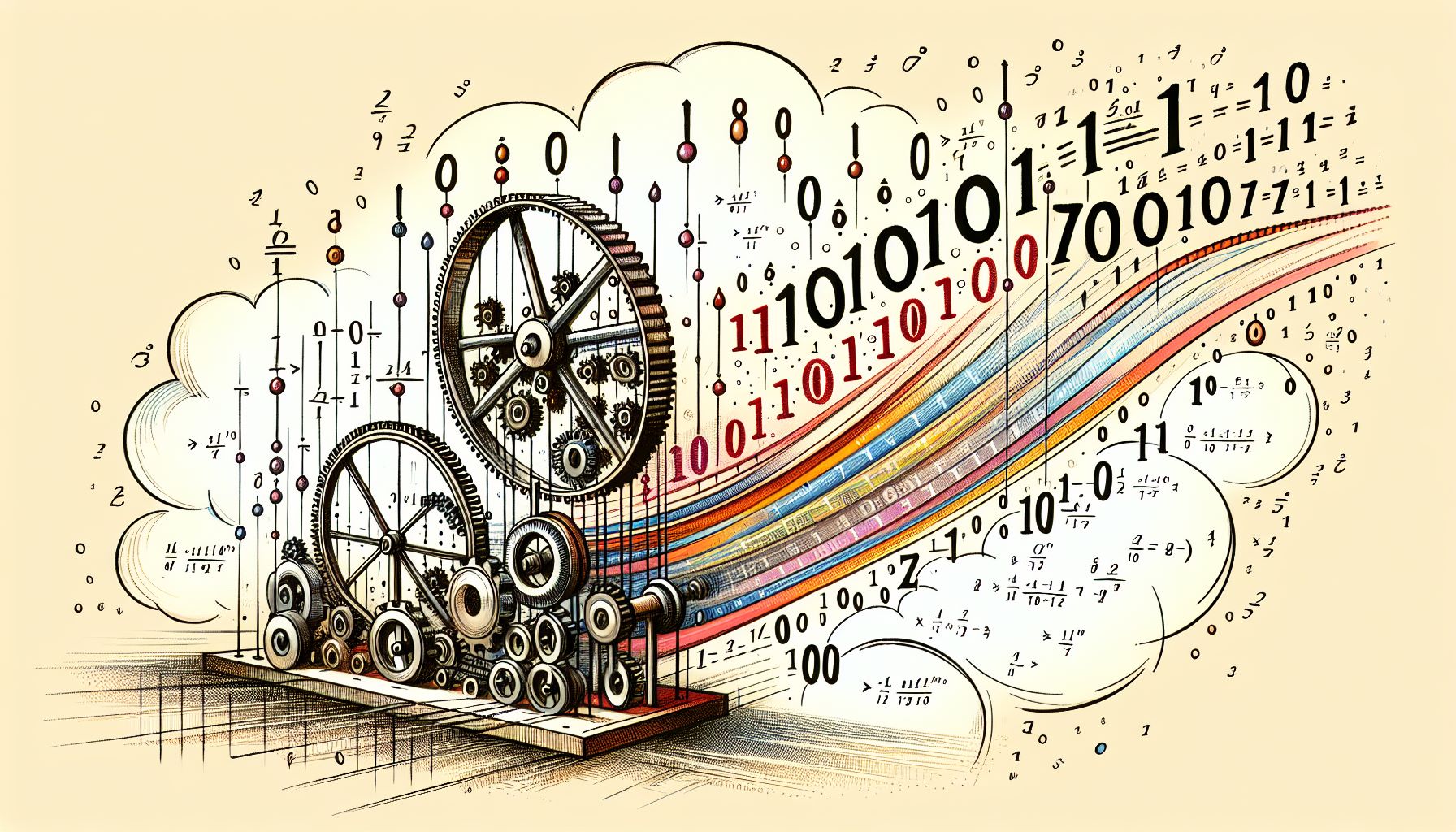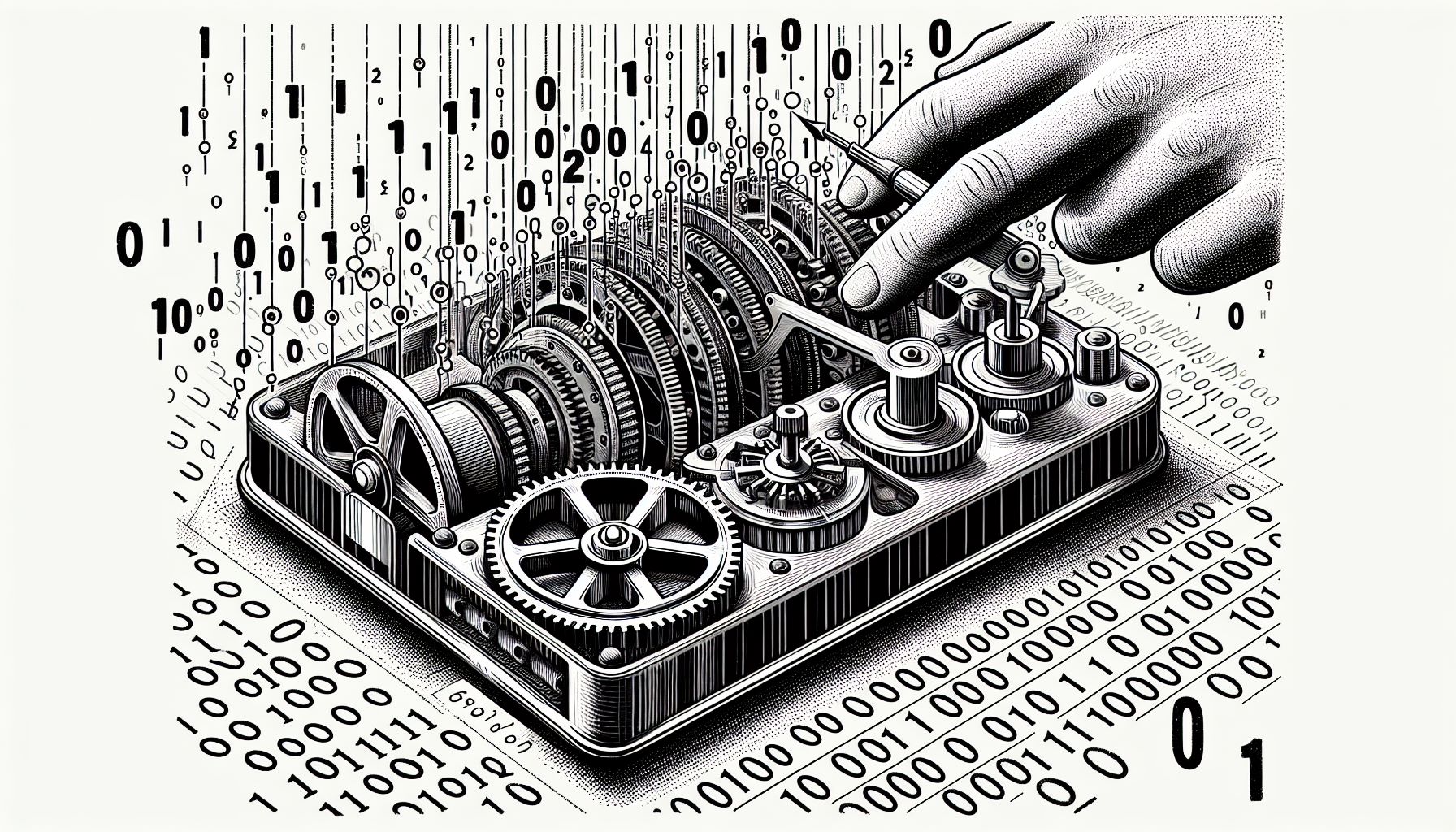Binary To Decimal
The Binary to Decimal Converter tool allows you to convert binary code into decimal numbers, providing an accurate and instant translation of your input. This tool is perfect for developers, engineers, students, and anyone working with digital systems who needs to convert binary data into a more readable decimal format. The process is straightforward and efficient, ensuring precise conversions every time.
Share on Social Media:
Effortless Binary to Decimal Conversion: Step-by-Step Guide
Wondering how to convert binary to decimal? Our step-by-step guide is designed to take you through the conversion process quickly and with ease. You’ll learn simple methods to accurately transform binary figures into their decimal equivalents and understand the principles behind the calculations.
Key Takeaways
The binary number system, fundamental to digital computing, is based on two digits (0 and 1) with each position representing a power of two, whereas the decimal system uses ten digits and each position increases by powers of ten.
Binary to decimal conversion involves multiplying each binary digit by its corresponding power of two based on positional value and summing the results to find the decimal equivalent.
Various methods for converting binary to decimal exist, such as the step-by-step and formula methods, as well as using binary to decimal converters, with each technique ensuring precision in translating binary sequences into decimal numbers.
Understanding the Binary Number System

The binary number system is a dance of dichotomy, where only two digits, zero and one, step to the rhythm of the base-2 structure. Unlike the decimal system’s ten-figure waltz, binary pirouettes on the simplicity of these two digits. Each binary digit, or bit, is a step in a sequence, where its position dictates its value, escalating in powers of two as we move left from the starting point.
This elegant simplicity is what makes binary the lingua franca of the digital world, enabling the representation and manipulation of data in the most fundamental form.
The Basics of Binary Digits
Within the binary number system, we recognize each digit as a bit, which is the smallest unit and can be either zero or one. Bits are arranged in a sequence, with each position representing a power of two. The rightmost digit starts at 2^0 and increases as we progress towards the left. It’s akin to dancers on a stage, where the position of each dancer determines their part in the performance.
Just as the lead dancer might take center stage, the leftmost bit, or the most significant bit, commands the highest value in this binary choreography.
Significance in Computing
Binary numbers extend beyond theoretical constructs and form the foundation of the digital universe. Computers converse in this numeric code, flipping bits in a binary ballet to process data and perform complex computations. The binary system’s base-2 simplicity aligns perfectly with the on-and-off states of electronic circuits, making it the ideal medium for the digital dialogue. Understanding the binary value of each bit is crucial to decode this digital language.
Every electronic device, from the simplest calculator to the most powerful supercomputer, depends on bits and bytes. Here, a byte is an 8-bit binary number and serves as the basic data unit.
Grasping the Decimal Number System

When we transition from the binary system to the more familiar decimal system, we immerse ourselves in a world built on a base-10 foundation. This system employs ten distinct digits, from zero to nine, to choreograph values in a way that’s inherently intuitive to our daily lives. Whether it’s calculating expenses or keeping score in a game, the decimal system’s widespread use is undeniable.
As we move to the left in this numerical sequence, each digit’s value increases tenfold, from units to tens to hundreds, mirroring the ascent of a staircase of numerical importance.
Fundamentals of Binary to Decimal Conversion

Converting binary to decimal is not just for academic pursuits; it serves as a link between the abstract realm of computing and the tangible reality of our everyday life. This conversion process helps to convert binary number into a decimal value, rendering the complex language of computers into a form more palatable to the human mind.
The crux of this transformation involves decomposing the binary number into an amalgamation of powers of two, with each bit contributing to the eventual decimal result. It’s a process of assigning meaning to each position, where the symphony of binary digits harmonizes into a coherent decimal melody.
Step-by-Step Conversion Method
The progressive method of converting binary numbers to decimals can be compared to piecing together a puzzle. Each binary digit, from the most significant bit to the least, is multiplied by decreasing powers of two. Imagine laying out pieces of a mosaic, where each piece is weighted by its significance in the overall image.
As these valued pieces unite, they compose a holistic image - the decimal values counterpart of the binary number.
Understanding Positional Value
Positional value is the essence of the binary system, a concept that echoes in every step of the conversion process. Each binary digit dances to the tune of powers of two, with every position corresponding to an exponent in this numerical choreography. It’s like a choir where each singer’s voice is modulated by their position in the arrangement; together, they create a harmonious decimal chorus from the binary notes.
Mastering the Binary to Decimal Formula
Gaining proficiency in binary to decimal conversion can be likened to learning a new dance routine, with each move adhering to a specific formula. In this numerical choreography:
‘N’ is the final dance move, the decimal equivalent
‘b’ represents each step, the binary digit
‘q’ is the position in the sequence, dictating the power of two to be applied.
With each move executed, the performer assesses the influence of their position in the sequence, aiding in the culmination - the decimal number.
Applying the Formula: Example
To illustrate the binary to decimal conversion formula in action, let’s take the binary number 11011 as our dance floor and each bit as a dancer. The lead dancer, positioned at 2^4, starts the routine with a powerful spin worth 16 points, followed by the next dancer at 2^3 with an 8-point move. The sequence continues, with each dancer contributing their calculated move until the routine concludes with a grand total of 27 points, the decimal form of our binary sequence.
Similarly, another lineup, the binary number 10001, performs a more modest routine, with only the lead and the final dancer making significant moves, culminating in a score of 17 points. These examples underscore the precision and elegance of the conversion dance, where each binary digit plays a pivotal role in shaping the final decimal performance.
Utilizing a Binary to Decimal Converter

In this digital era, a binary to decimal converter stands out as a symbol of efficacy, facilitating swift and error-free translation of binary sequences into decimal numbers. Platforms like PagesTools.com provide this service with algorithms that ensure accuracy, reliability, and user-friendliness, all available at no cost.
How to Use the Converter
Employing a binary to decimal converter is as straightforward as participating in a dance contest with a partner who is well-versed with all the moves. You input the binary sequence into the converter, and with a single click of the ‘Convert’ button, the magic happens. The converter takes the lead, swiftly executing the conversion binary to decimal and presenting the decimal equivalent, ready to be used in further calculations or simply admired for its numerical beauty.
Practical Conversion Examples
Practical decimal conversion examples serve as demonstrations of binary to decimal conversion, illustrating its application in a variety of situations. From the simple binary number 100, representing a modest 4 in decimal, to the more elaborate 101101, translating into a 45, these examples are the testaments of the conversion method’s versatility.
From Simple to Complex: Binary Conversion Scenarios
The charm of binary to decimal conversion is its consistency. It holds true whether working with a simple sequence like 1110, which translates to 14 in decimal, or a somewhat complex pattern like 11001, equivalent to 25. As the complexity of the binary number increases, such as with the sequence 111010, which maps to 58 in decimal, the conversion method remains steadfast, ensuring that each binary digit is accurately reflected in the final decimal form. This consistency is also evident in decimal conversion binary scenarios, where the process is simply reversed.
For those who relish a challenge, consider the binary number 1010111 - a dance of digits that, when translated, steps into the decimal world as 87.
Decoding Binary to Decimal Conversion Table
A binary to decimal conversion table serves as a quick reference guide, seamlessly mapping binary sequences to their decimal equivalents. It includes a range of binary numbers, from the basics like ‘111’, which equates to decimal 7, to extended figures such as ‘1000000’, corresponding to 64.
This table not only simplifies the conversion process but also serves as an educational guide, aiding in the comprehension of the binary number system.
Exploring Multiple Methods of Conversion
Though the step-by-step and formula methods are popular in binary to decimal conversion, there are other techniques available in this numerical arena. The diversity of methods, including the doubling method and positional notation, offer alternative rhythms to mastering this essential skill.
The Doubling Method Explained
The doubling method is a conversion technique that starts with the left-most digit and gradually includes each following digit through a calculated series of doubles and additions. It’s a progressive dance, where each step doubles the previous total and adds the current digit’s value, culminating in the final decimal number.
Positional Notation: A Detailed Look
Positional notation is a systematic arrangement where each binary digit multiplies its inherent power of two, corresponding to its position. This method ensures that every digit contributes appropriately to the final decimal outcome, reflecting the precision and order inherent in binary to decimal conversions.
Advanced Topics: Beyond Whole Numbers
Venturing beyond the simplicity of whole numbers, advanced binary to decimal conversion introduces the concept of binary fractions, expanding the horizon of our numerical exploration.
Converting Binary Fractions
Transforming binary fractions into decimal numbers can be likened to introducing an additional layer of complexity to an already complex process. Each digit beyond the binary point is divided by its corresponding power of two, and the results are combined to reveal the decimal equivalent, showcasing the elegance of binary fractions in decimal form.
Converting Between Binary and Other Number Systems
Our exploration of the numerical realm leads us to the conversion between binary and other number systems, like hexadecimal, underscoring the interconnectivity of various digital languages.
Binary to Hexadecimal: Key Differences
In contrast to the binary system, which confines itself to two digits, the hexadecimal system widens its scope to sixteen, encompassing digits from 0 to 9 and letters A to F. This broader range of digits allows for more compact and efficient representation of binary codes in various computing contexts, exemplifying the versatility of the hexadecimal system.
Summary
As the curtain falls on our exploration of binary to decimal conversion, we reflect on the intricate tapestry of binary numbers and their decimal translations. From the foundational steps of understanding the binary and decimal number systems to the choreographed routines of conversion methods, we have traversed a landscape rich with numerical nuance. May this journey inspire you to embrace the binary beat and decode the digital world with newfound confidence and clarity.
Frequently Asked Questions
Why is the binary number system so important in computing?
The binary number system is crucial in computing because it aligns with the binary nature of electronic circuits, simplifying data representation and processing. It is the foundational language of computers.
Can all types of binary numbers, including fractions, be converted to decimal?
Yes, all types of binary numbers, including fractions, can be converted to decimal using specific conversion methods.
Is there a quick way to convert binary numbers to decimal without doing the math?
Yes, you can use binary to decimal converters, such as the one provided by PagesTools.com, for an instant and accurate conversion without manual calculations.
Does the position of a binary digit affect its value in the decimal system?
Yes, the position of a binary digit significantly impacts its value in the decimal system, as each digit's position corresponds to a specific power of 2, affecting the overall decimal outcome.
What is the main difference between binary and hexadecimal number systems?
The main difference between binary and hexadecimal number systems is that binary is base-2, using only 0 and 1, while hexadecimal is base-16, using 0-9 and A-F for a more compact representation of large binary numbers.